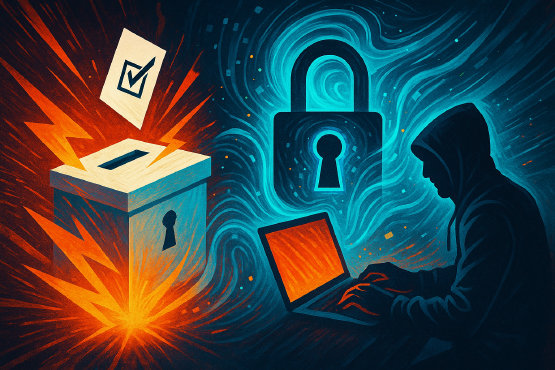Election Security Issues and Responses: How to Protect Elections in the Digital Age
The Current State of Election Fraud Discussions
With just over a month until the presidential election in 2025, discussions about election fraud are resurfacing across various sectors of society. In today's world, where digital technology is widespread, it has become crucial to ensure the safety and reliability of the election process. Compared to the past, the threat of election fraud is evolving in a more sophisticated and organized manner. This article will explore the reality of election fraud we face, technical and institutional responses, and further tasks for the sustainability of democracy.
Current Aspects and Threats of Election Fraud
Modern electoral fraud has evolved beyond simple site-centric manipulation of the past, progressing into new forms alongside advancements in digital technology. Traditional methods relied on illegal activities at polling places or manipulation through human resources, but now, the rapid spread of forged identification, online hacking, and personal data breaches has become prevalent. Forgery and misuse of identification remain the most common tactics, with the production and distribution of forged IDs becoming normalized through social media and online communities. As a result, those attempting fraud are finding an environment where they can influence elections with lower costs and risks. Online hacking and personal data breaches are also emerging as major threats to electoral systems.
Current Status and Structural Limitations of the Election Management System
Several countries, including South Korea, are facing various challenges in the process of digitizing traditional analog voting methods. The current identification procedures are based on presenting identification cards and cross-referencing with a registry, but they have limitations in completely blocking advanced forgery technologies. Paper and photograph-based authentication methods are highly susceptible to duplication, making them vulnerable to detecting fraudulent activities. Meanwhile, surveillance systems remain limited in functionality, and some areas' surveillance cameras and internal control systems are at a symbolic level. Therefore, there is a significant risk of abnormal interference occurring in the digital environment.
The reality and seriousness of counterfeit ID distribution
In recent years, the production and distribution of fake identification cards through online platforms have become increasingly sophisticated and intricate. Not only criminal organizations but also individuals can easily purchase or create counterfeit IDs through social media or the dark web. Despite this practice being a clear violation of election laws, effective enforcement has not been implemented. An even more serious issue is that these networks are connected to international organized crime. This poses a crisis for democracy globally, beyond just the electoral order of a single country.
The necessity for the introduction of biometric authentication and digital security technologies
The current certification system remains vulnerable to forgery and misuse, necessitating more innovative technological alternatives. Biometric authentication technologies such as fingerprints, iris scans, and facial recognition are considered methods that make forgery nearly impossible, thereby enhancing the credibility of elections. In some regions, there are examples of integrating biometric authentication into mobile voting systems to precisely verify voter identities. Additionally, voting systems leveraging blockchain technology possess the advantage of being tamper-proof, significantly enhancing the security of elections.
Supplementary Tasks of Legal Systems and Policies
The advancement of technology alone cannot prevent electoral fraud, and the establishment of institutional measures is essential. Firstly, the urgent implementation of a certified authentication system capable of verifying IDs in real-time is necessary. This system has already proven effective in the financial sector and public institutions, making it highly applicable to elections. Additionally, penalties for the production and distribution of counterfeit IDs must be strengthened, and efforts to monitor and crack down on illegal advertisements on online platforms are needed. Given the real-time nature and anonymity of social media, collaboration with platform operators for access monitoring and blocking measures is also important.
The Importance of Enhancing Civic Consciousness and Participation
Enhancing civic awareness is an essential task to prevent electoral fraud. In particular, efforts are needed to raise awareness about the risks of fraudulent elections and the importance of democracy through campaigns targeted at young people and students. Current technologies and policies can only be effective when based on responsible citizen participation and oversight. When technology, policy, and citizen education come together, a sustainable electoral system can be established.
The Direction of Future Elections and the Role of Citizens
Currently, we must not only prepare for the upcoming elections but also consider the feasibility and sustainability of digital democracy. The threat of electoral fraud goes beyond mere technical issues it is a serious crime that infringes upon the sovereignty of the people, which can only be overcome through the combined efforts of the government and citizens' participation. Blockchain-based voting systems, biometric authentication, and mobile platforms represent a facet of the future we can create. To realize this, the improvement of laws and regulations, technological development, and enhancement of civic awareness must be organically combined.
Conclusion: Our Responsibility to Uphold Democracy
The issue of electoral fraud we face today is not merely a technical defect, but a serious threat directly linked to the exercise of sovereignty, which is a core principle of democracy. Ignoring this is akin to giving up our future. The possibility of fake identification and fraudulent voting undermines the foundation of electoral trust, and both technological innovation and institutional supplements must be pursued simultaneously. Above all, responsible participation and vigilance from citizens are essential. Fair and transparent elections are not granted automatically, and we must not forget the will to uphold them as a community.

Post a Comment